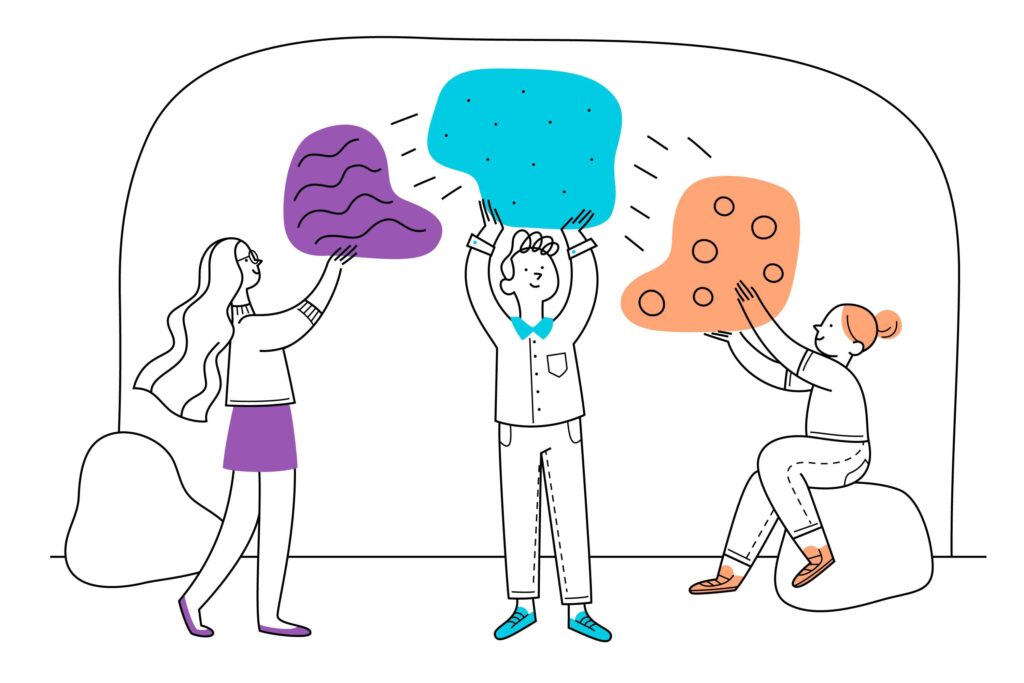ceremonies
daily stand
A daily stand-up meeting is an opportunity for the project team to discuss a project’s progress at a high level. These meetings last 15 minutes and allow each contributor to report on their accomplishments since the last stand-up meeting.
True to its name, all participants in stand-ups usually remain standing to keep the meetings short and on-topic. However, digital stand-ups are also possible. Making sure there’s a repeatable agenda is the best way to keep either format of a daily stand-up meeting running smoothly.
In Agile project management, daily stand-up meetings are essential. These meetings allow project members to share critical information, openly discuss issues, and hold themselves and each other accountable. The collaboration and transparent level of communication can also lead to improved team dynamics, which can make completing a project together more productive and enjoyable for all.
Scrum stand-ups are 15-minute daily meetings that occur each day of the sprint to discuss progress and quickly note any issues. Each contributor answers three questions:
- What did you accomplish since the last meeting?
- What are you working on before the next meeting?
- What is getting in your way or preventing you from doing your job?
These three questions hold team members accountable to their tasks and commitments by encouraging small, achievable goals that are shared with the team.
They also allow team members to discuss problems, challenges, and setbacks openly, so no one is left in the dark.
sprint review
As described in the Scrum Guide, the purpose of the Sprint Review is to inspect the outcome of the Sprint and determine future adaptations. The Scrum Team presents the results of their work to the teacher and progress toward the lesson Goal is discussed.
During the event, the Scrum Team and the teacher review what was accomplished in the Sprint and what has changed in their environment. Based on this information, attendees collaborate on what to do next. The Backlog may also be adjusted to meet new opportunities. The Sprint Review is a working session and the Scrum Team should avoid limiting it to a presentation.
retrospective
There are many ways to do retros in Agile. From the simple 3 posts- it technique, What was good, what can be improved and what we need to stop doing. Very useful for small teams of 4 or 5 students.
Another way of doing this is you take the whole classroom approach having up to 25 students, and this is what you do: FISHBOWL.
Fishbowl sessions have a small inside circle of people surrounded by a larger outside circle of participants. The inside group is formed with people who made concrete progress on a challenge of interest to those in the outside circle. The fishbowl design makes it easy for people in the inside circle to illuminate what they have done by sharing experiences while in conversation with each other. The informality breaks down the barriers with direct communication between the two groups of people and facilitates questions and answers flowing back and forth. This creates the best conditions for people to learn from each other by discovering answers to their concerns themselves within the context of their working groups.
You can stop imposing someone else’s practices!
structuring invitation
- Ask those in the fishbowl to describe their experience—the good, the bad, and the ugly—informally, concretely, and openly. Invite them to do it in conversation with each other as if the audience wasn’t there and they were sharing stories around a watering hole or stuck in a van on the way to the airport. Firmly, ask them to avoid presenting to the audience.
- Invite the people outside the fishbowl to listen, observe nonverbal exchanges, and formulate questions within their small groups.
WHY? Purposes
- Get down-to-earth field experience and all the questions and answers about new endeavors out on the table for everyone to understand at the same time
- Create conditions for new ideas to emerge
- Make space for every participant’s imagination and experience to show up
- Build skills in listening, storytelling, pattern-finding, questioning, and observing
- Celebrate early adopters and innovators who have gained field experience (often failing forward and vetting the prototype

